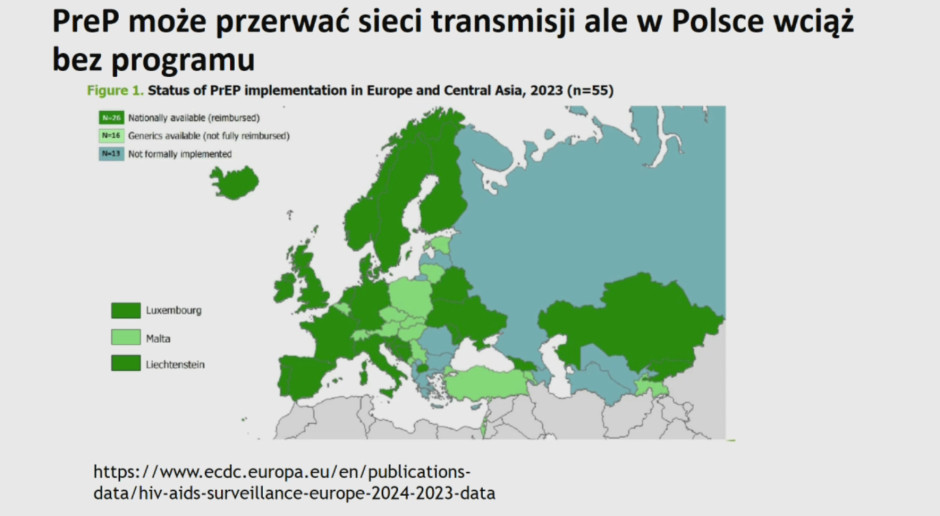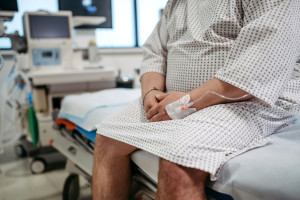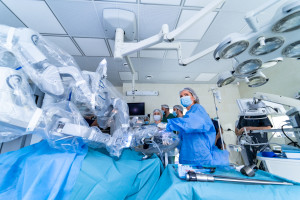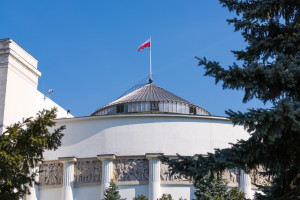Infections are rising: 2,000 HIV cases. New plan: pre- and post-exposure medication.

- As emphasized by infectious disease specialists in Poland, the rate of new HIV infections has been increasing significantly for several years.
- During the recent (July 8) meeting of the Parliamentary Group for the Prevention of HIV Infections and Combating AIDS, experts pointed to new opportunities to limit the progress of the HIV/AIDS epidemic
- Pre-exposure prophylaxis (PrEP) is becoming increasingly popular worldwide. It involves taking appropriate medications by people at risk of contact with someone who is HIV positive and infectious.
- Poland is one of the few countries in Europe that does not have a state-funded HIV pre-exposure prophylaxis program.
- Indications for PrEP use according to global scientific guidelines include, among others, people with multiple sexual partners and partners of people living with HIV with detectable viral load.
- According to specialists' estimates, approximately 3,000 people in Poland use preparations enabling pre-exposure HIV prevention.
Data from the National Institute of Public Health - National Research Institute show that from the beginning of the HIV/AIDS epidemic in 1985 until December 2024, HIV infection in Poland affected approximately 35,200 people, and 4,400 AIDS patients were treated, of whom 1,500 died. As of April 30, 2025, 21,156 patients, including 137 children, are receiving antiretroviral treatment.
As experts emphasize, Poland has seen significant increases in the rate of new HIV infections for several years. These increases are largely related to migration. Over the past two years, the number of newly diagnosed HIV infections, both in migrant and Polish populations, has reached record levels.
In the first 10 months of 2024, almost 2,000 new cases of infection were recorded , many of them in the advanced stage of the disease.
In Poland, a significant step forward in HIV/AIDS prevention has been the introduction of HIV testing into primary healthcare from May 2025. This change has the potential to curb the HIV epidemic in Poland. Previously, free HIV testing was available anonymously at consultation and diagnostic centers.
The percentage of people testing for HIV in Poland has remained low for years, at around 10% of the adult population. Easier access to testing at primary care facilities offers a chance to change this situation, but experts also call for educational campaigns and greater public awareness of HIV prevention.
You can consciously reduce the risk of infection by taking the medication before contact.During the recent (July 8) meeting of the Parliamentary Group for the Prevention of HIV Infections and Combating AIDS, experts pointed to further opportunities offered by medicine to limit the progression of the HIV/AIDS epidemic.
Pre-exposure prophylaxis (PrEP) is becoming increasingly popular worldwide, significantly reducing the risk of HIV infection. It involves taking appropriate medications by individuals at risk of contact with someone who is HIV positive and infectious.
As explained by Professor Miłosz Parczewski, national consultant in the field of infectious diseases, HIV pre-exposure prophylaxis is a highly effective biomedical measure if the prophylactic preparations are taken correctly.
"If the exposed person maintains adequate drug saturation at the time of contact, scientific studies show a reduction in the risk of infection of between 70 and 86 percent. For newer drugs, this reduction is above 90 percent. This is standard practice. Such data appears in both registration and observational studies," explained the national consultant in the Department of Infectious Diseases.
Oral pre-exposure prophylaxis involves administering one tablet once daily, 7 days before and 7 days after exposure to infection. For men, a double dose is administered.
In Poland, pre-exposure prophylaxis (PEP) medications are available at full cost. They cost approximately 160-200 PLN per month. Experts estimate that approximately 3,000 people take them. PEP is administered as long as the risk of infection persists.
Data presented by the consultant indicate that there are two major regions of the world where pre-exposure prophylaxis is very popular: the United States and countries in the so-called Global South, namely Brazil and sub-Saharan Africa. In the Global South, women significantly outnumber women in the use of PrEP, which is considered one of the greatest achievements in biomedical prophylaxis.
Will there be a PrPE program?As Professor Miłosz Parczewski reported, Poland is one of the few countries in Europe without a state-funded HIV pre-exposure prophylaxis program. This means that medications are fully paid for.

- We are struggling with a certain lack of knowledge about the possibility of pre-exposure prophylaxis both among the exposed population and among healthcare workers who can inform about such a possibility - assessed the professor.
The national consultant and other specialists are working towards implementing a PrEP health program in Poland. The Ministry of Health is currently discussing the initial concept of such a program. The primary indication for implementing pre-exposure treatment would be contact or exposure to HIV.
The following places are proposed as places where such treatment would be administered: HIV/AIDS prevention and treatment clinics, infectious disease clinics and dermatology and venereology clinics.
Indications for PrEP use, according to global scientific guidelines, include individuals with multiple sexual partners, men who have sex with men (MSM), sex workers, injection drug users, partners of people living with HIV with detectable viral load, and migrant populations.
It's difficult to predict the future of such a program. Some argue that there are other, more pressing health needs.
In this context, doctors point to the problem of a lack of education among patients. "I raised the topic of HIV pre-exposure prophylaxis on social media. I wrote that medications for this type of prophylaxis should be reimbursed, because such measures in other countries have reduced the number of new transmissions of the virus. This opinion was met with a strong reaction from both heterosexual and homosexual people. They asked how 'something like this' could be financed, " said doctor Jakub Wyszyński, advisor to the Parliamentary Committee for HIV Prevention.
Undetectable = non-infectiousIn Poland, treatment for people infected with HIV and AIDS has been provided since 2001 as part of the Minister of Health's health policy program, "Antiretroviral Treatment for People Living with HIV in Poland." The program covers all people infected with HIV and AIDS residing in the Republic of Poland, regardless of insurance status.
As experts emphasize, a person with undetectable HIV viral load is not contagious. "Any person who is effectively treated for at least six months becomes sexually non-infectious, meaning they cease to be a source of potential exposure to others," reminds Professor Miłosz Parczewski.
Epidemiologists estimate that between 18 and 22 percent of HIV-infected people remain undiagnosed.
HIV infection (human immunodeficiency virus) causes acquired immunodeficiency syndrome (AIDS). The virus replicates in immune system cells and then destroys them, leading to a gradual impairment of cellular immunity. This results in acquired immunodeficiency syndrome, which is characterized by the occurrence of numerous opportunistic infections and cancers. AIDS is not a standalone disease. It is the final stage of HIV infection and usually occurs after many years of infection.
Thanks to medical advances, if a person living with HIV takes antiretroviral drugs regularly and has an undetectable viral load (a condition defined as the presence of viruses in the blood that can multiply), they are non-infectious to sexual partners according to the n=n rule, i.e. undetectable = non-infectious.
Copyrighted material - reprint rules are specified in the regulations .
rynekzdrowia













